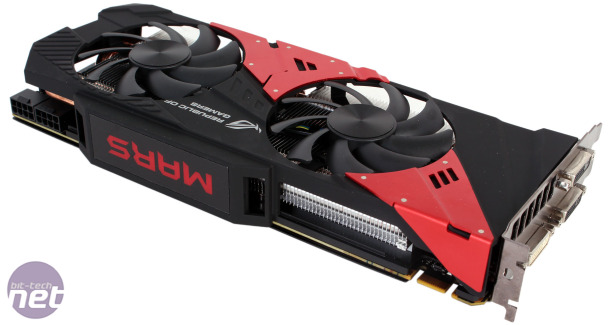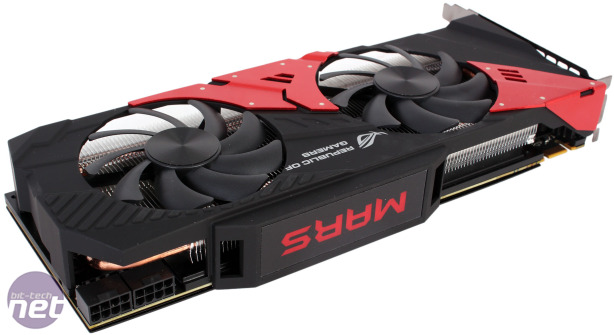Performance Analysis
The MARS kicks things off with an excellent result in Battlefield 4 at 2,560 x 1,600. It breaks the pattern we saw in this game in our performance analysis where Nvidia cards tend to have relatively low minimum framerates. As a result, its minimum here is 40fps, a whole 7fps quicker than GTX 780 Ti. Also, even by average framerates, it has a lead of 7 percent and 14 percent over GTX 780 Ti and GTX Titan respectively. At higher resolutions though, it falls down the charts, with a particularly low minimum at 5,760 x 1,080. It does manage to do slightly better than the GTX Titan at 4K, but at every resolution AMD's HD 7990 is the clear victor, and its R9 290X also does better than the MARS at 5,760 x 1080 and 4K.There's another solid showing at 2,560 x 1,600 in BioShock Infinite from the GTX 760 MARS, as here it stays ahead of all the single GPU cards by at least 4fps and never dips below 60fps. The HD 7990 and GTX 690 are still ahead, however. When using three screens, the card stutters, causing its minimum framerate to drop to just 7fps. This appears to be a driver issue localised to Nvidia hardware in SLI, as the GTX 690 has a similarly poor result. It gets a bit better at 4K, but still has a lower minimum framerate than the GTX 780, despite its average being on par with GTX Titan.
Yet again the card performs very well at 2,560 x 1,600 in Crysis 3, with its result of 41fps being 4fps and 6fps ahead of GTX Titan and the GTX 780 Ti respectively. It dips a little again at 5,760 x 1,080, but not as bad as elsewhere, as its performance is pretty much on par with Titan. However, at 4K, it falls further behind, as it again struggles to maintain its minimum framerate.
Skyrim proves unproblematic at every resolution for this card, but even so the general pattern is the same – solid and impressive performance at 2,560 x 1,600 but shakier framerates beyond that. At 5,760 x 1,080, for example, it has an impressively high average framerate of 69fps, but its minimum is capped at 46fps, the same as both other dual GPU cards. Then at 4K, despite having the highest average of the cards tested, its minimum drop to 44fps, which is behind even the GTX 780.
The Unigine benchmark positions the GTX 760 MARS nicely between the GTX 690, which has an 8 percent lead, and the GTX 780 Ti, over which its score of 2,894 gives it a 9 percent lead of its own. It has substantial ground over the HD 7990 too, but Nvidia hardware is favoured in this test.
Power consumption is definitely on the high side, although this is typically the case with dual GPU cards. Even so, the figures are higher than we'd like over the GTX 690, especially as this card is typically the faster of the two. Thankfully though, the DirectCU II cooling works effectively, keeping the card locked at about 80°C for a delta T of 58°C, which is 5°C less than the GTX 690 and on par with the stock GTX 760. That said, you can expect to hear the fans kick in pretty quickly after a few minutes of the card being under load, as they were easy to pick out over the rest of our hardware.
The overclocked results are rather tasty, although we did limit our testing here to 2,560 x 1,600, a resolution that the card excels at. In Battlefield 4, the MARS jumps ahead of the GTX 690 when overclocked, but the HD 7990 maintains an easy lead. In Crysis 3 though, Asus's card is able to overtake both other dual GPU cards with its fantastic result, while in Unigine Valley it just inches ahead of the GTX 690. Another plus is that even though the fans are a little noisy, they don't seem to get much noisier when the card is overclocked.

MSI MPG Velox 100R Chassis Review
October 14 2021 | 15:04











Want to comment? Please log in.